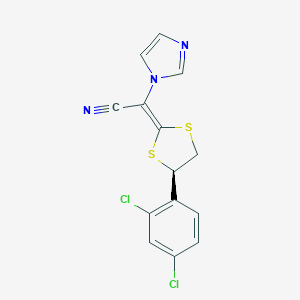Details of the Active Pharmaceutical Ingredient (API)
| Full List of Drug Formulations (DFMs) Containing This API | ||||||
|---|---|---|---|---|---|---|
| Luliconazole 1% cream | Click to Show/Hide the Full List of Formulation(s): 1 Formulation(s) | |||||
| Drug Formulation 1 |
DFM Info
 click to show the detail info of this DFM click to show the detail info of this DFM
|
|||||
| All DIGs | Click to Show/Hide the Full List of DIGs in This DFM
Benzyl Alcohol; Butylated Hydroxytoluene; Cetostearyl Alcohol; Isopropyl Myristate; Medium-Chain Triglycerides; Methylparaben; Polysorbate 60; Propylene Glycol; Purified Water; Sorbitan Monostearate
|
|||||
| Dosage Form | Cream | |||||
| Company | Medicis | |||||
| DIG(s) with Biological Activity | ||||||
| DIG Name | DIG Info | Representative Biological Activity of This DIG | REF | |||
| Butylated hydroxytoluene | DIG Info | Carbonic anhydrase II (Ki = 630 nM) | [1] | |||
| methylparaben | DIG Info | Carbonic anhydrase VII (Ki = 780 nM) | [2] | |||
| Benzyl alcohol | DIG Info | Indoleamine 2,3-dioxygenase 1 (IC50 = 1400 nM) | [3] | |||
| Propylene glycol | DIG Info | Albendazole monooxygenase (Inhibition ratio < 20 %) | [4] | |||
| Medium-chain triglyceride | DIG Info | Colon cancer Caco-2 cells (Inhibition ratio > 36 %) | [5] | |||
If you find any error in data or bug in web service, please kindly report it to Dr. Zhang and Dr. Mou.

